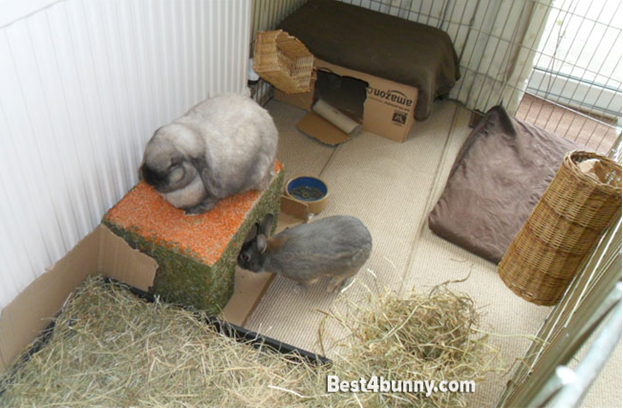Keeping a rabbit indoors can be a rewarding experience, offering a safe, controlled, and interactive environment for your furry friend. However, it requires careful planning and commitment to ensure your rabbit’s health, safety, and happiness. Here’s a comprehensive guide on keeping rabbits indoors, covering all essential aspects.
Benefits of Keeping Rabbits Indoors
- Safety from Predators: Indoors, rabbits are protected from predators like foxes, hawks, and neighborhood cats.
- Climate Control: Indoor environments offer stable temperatures, protecting rabbits from extreme weather conditions.
- Increased Social Interaction: Indoor rabbits benefit from more frequent interaction with family members, reducing loneliness and fostering stronger bonds.
- Easier Health Monitoring: Changes in behavior, appetite, or litter habits are more noticeable indoors, allowing for timely veterinary care.
- Longer Lifespan: Indoor rabbits often have longer lifespans due to fewer risks and constant care.
Setting Up an Indoor Habitat
1. Choosing the Right Cage or Enclosure
Size and Space:
- Select a spacious cage or pen. A good rule is at least four times the size of your rabbit when stretched out.
- Larger is better, providing ample room for movement and exercise.
While discussing the importance of mental stimulation of indoor rabbit housing, Wassam advises “Provide hideaways in the cage where your rabbit can retreat and feel safe. Use tunnels, cardboard boxes, or commercial hideouts to create cozy hiding spots.” – in Bunny Vault
Types of Enclosures:
- Cages: Ensure they have solid flooring to prevent sore hocks.
- Exercise Pens: Offer more space and can be adjusted to fit your home layout.
- Rabbit-Proofed Rooms: A whole room dedicated to your rabbit provides the most space and freedom.
2. Rabbit-Proofing Your Home
Protect Your Belongings:
- Cover wires with cord protectors.
- Block off access to furniture, baseboards, and any valuable items that could be chewed.
Create a Safe Environment:
- Remove toxic plants, chemicals, and small objects that could be ingested.
- Ensure the area is free from potential hazards like sharp objects or unstable furniture.
Providing Proper Care
1. Diet and Nutrition
Hay:
- Provide unlimited access to high-quality hay (timothy, orchard grass, or oat hay). It’s crucial for dental health and digestion.
Fresh Vegetables:
- Offer a variety of fresh vegetables daily, focusing on leafy greens like romaine lettuce, cilantro, and parsley.
Pellets:
- Feed a small amount of high-quality rabbit pellets to ensure balanced nutrition.
Fresh Water:
- Ensure a constant supply of fresh water, using a water bottle or a heavy ceramic bowl to prevent tipping.
2. Grooming and Health
Regular Grooming:
- Brush your rabbit regularly to remove loose fur and prevent hairballs, especially during shedding seasons.
- Trim nails every few weeks to prevent overgrowth and discomfort.
Health Checks:
- Regularly check your rabbit for signs of health issues, including dental problems, skin conditions, and changes in behavior.
- Schedule annual vet visits with a rabbit-savvy veterinarian for routine check-ups and vaccinations if necessary.
Enrichment and Exercise
1. Toys and Activities
Chew Toys:
- Provide plenty of chew toys to satisfy your rabbit’s natural chewing instincts and prevent boredom. Options include untreated wood toys, cardboard boxes, and safe chew sticks.
Tunnels and Hideaways:
- Create hiding spots with tunnels, cardboard boxes, and store-bought hideaways. These provide security and entertainment.
Exercise Time:
- Allow your rabbit plenty of time outside their enclosure to explore and exercise. Use a rabbit-proofed area or an exercise pen.
2. Social Interaction
Daily Interaction:
- Spend time with your rabbit daily to build trust and provide companionship. Engage in gentle petting, playtime, and training sessions to keep them mentally stimulated.
Bonding:
- Rabbits are social animals and often benefit from having a bonded partner. If you have the resources, consider adopting a pair of bonded rabbits.
Maintaining a Clean Environment
1. Litter Training
Litter Box Setup:
- Use a litter box with rabbit-safe litter. Place hay on top to encourage use, as rabbits like to munch while they do their business.
- Clean the litter box regularly to maintain hygiene and reduce odors.
2. Cleaning Routine
Regular Spot Cleaning:
- Perform daily spot cleaning to remove soiled bedding, feces, and uneaten food. This helps maintain a cleaner environment between full cleanings.
Weekly Full Cleaning:
- Fully change the bedding and clean the cage at least once a week. More frequent cleanings may be necessary for larger rabbits or multiple rabbits.




